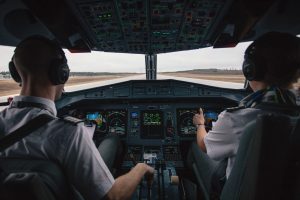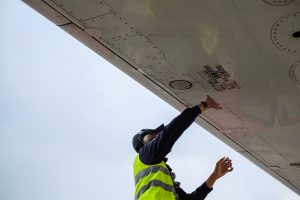It isn’t uncommon for a company with an air carrier certificate for conducting 14 C.F.R. Part 135 operations to also hold a 14 C.F.R. Part 145 repair station certificate. In this situation, the company’s repair station business performs maintenance on both the aircraft operated by the air carrier as well as other aircraft.
The company may also employ individuals who hold both an airman certificate and a mechanic certificate. Many of these individuals wear two hats for the company: They fly for the air carrier and also perform maintenance for the repair station.
On any given day one of these pilots-mechanics may fly a trip for the Part 135 operation. And then upon return he or she spends the remainder of his or her shift performing maintenance work for the repair station business. Alternatively, on some days the pilot-mechanic may spend his or her entire shift, or more, performing maintenance without flying at all. But does it matter how much time the pilot-mechanic spends performing maintenance versus flying Part 135 flights? It very well may.
The Issue

As you may know, the Part 135 regulations do not include any duty or rest requirements or limitations for maintenance personnel. Similarly, Part 145 does not include duty or rest requirements or limitations for maintenance personnel performing maintenance for Part 91 operators or Part 135 air carriers. (Duty time limitations are imposed, however, when Part 145 maintenance personnel are performing maintenance for a Part 121 air carrier pursuant to 14 C.F.R. 121.377, but that is a subject for another article).
On the other hand, pilots flying Part 135 flights are subject to flight and duty limitations, as well as rest requirements, which vary depending upon the type of operation being flown. And it is these limitations and requirements that the pilot-mechanic must consider when he or she is both flying and performing maintenance for his or her employer.
A Question Of Time
One specific question that must be answered is “whether time spent by the pilot-mechanic employee doing maintenance for the Part 145 repair station must be logged as duty time for the Part 135 operation.” Two typical situations in which this question arises occur when (l) the pilot-mechanic performs mechanic duties under the Part 145 certificate but then flies, or is expected to fly, if requested by the Part 135 air carrier or (2) the pilot-mechanic is solely performing mechanic duties and is not flying for the Part 135 air carrier, nor is the pilot-mechanic expected to fly is asked.
In order to answer the question, we need to understand what the FAA means by “duty” and “rest.” With respect to duty, the FAA considers an individual to be on duty when he or she is actually working for the employer, whether for the air carrier or repair station business of the company, or presently responsible for work (e.g. the employee is expected to work if asked).
Rest, on the other hand, means a continuous period of time during which the individual is free from all restraint by the employer; that is, the employee does not have to work nor does he or she have to work if asked.

Scenario One. Looking at the first situation, the pilot-mechanic is required to fly if requested by the Part 135 air carrier. Since a pilot is on duty if the expectation exists that the pilot will fly if he or she is asked, the pilot-mechanic is considered to be on duty whether performing maintenance for the air carrier or repair station business of the employer or simply waiting to be asked to fly.
Scenario Two. In the second situation, the pilot-mechanic is not expected to fly. However, he or she is spending time performing mechanic duties for either the air carrier or repair station business as assigned by the company. Since the pilot-mechanic is performing work assigned and required by the company, the time spent performing maintenance would not be considered rest. As a result, the pilot-mechanic would be on duty in this situation as well.
Conclusion
As you can see, in either of these two situations the individual’s performance of maintenance will have a direct impact on whether and how much the pilot-mechanic may be able to fly for the air carrier. The more maintenance performed, the less duty time available for flying without first receiving the required rest. Depending upon when the pilot-mechanic wants to wear his or her pilot and mechanic hats, he or she will need to plan accordingly to remain in compliance with the regulations.


